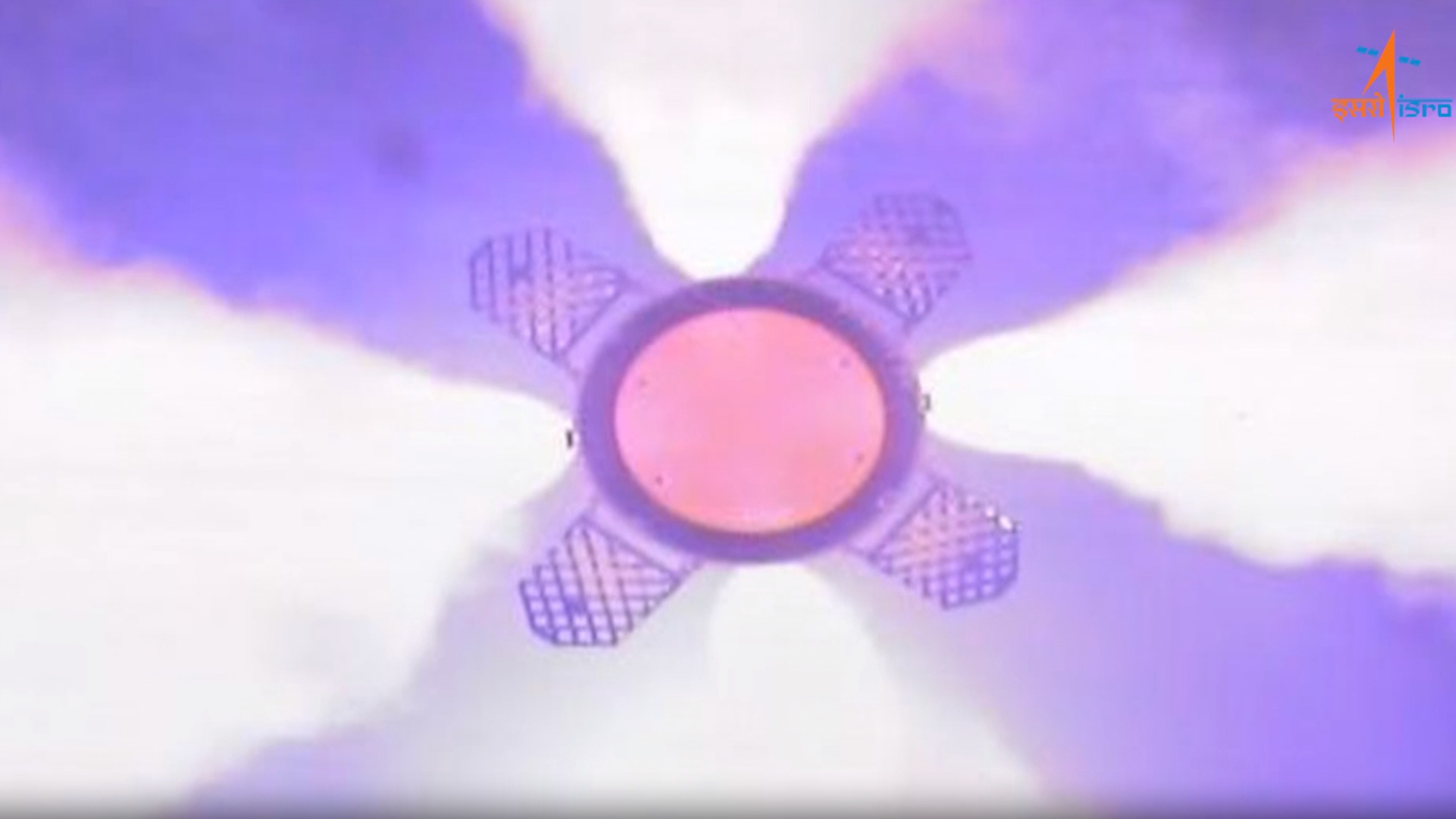A new video shows you the historic Saturday (Oct. 21) test flight of India's new crew capsule from the spacecraft's perspective.
Early on Saturday morning, India launched the uncrewed TV-D1 mission, which tested the performance of the capsule's attached emergency-escape system.
Everything went according to plan: The escape system's motors fired up on schedule, jetting the capsule away from its rocket, as it would do in the case of an anomaly during launch. The test was a big success for India, which is working to launch astronauts to Earth orbit aboard the capsule in 2024 on the Gaganyaan mission.
Related: India launches test flight for future Gaganyaan astronaut mission

The 90-second video gives viewers a spacecraft's-eye view of the major milestones of TV-D1, which lifted off from Satish Dhawan Space Centre on the island of Sriharikota. For example, from above, we see ignition of the single-stage, liquid-fueled Test Vehicle rocket, whose name puts the "TV" in TV-D1.
The TV was built specially for this mission, by the way. On the Gaganyaan astronaut flight, the capsule will fly atop India's Launch Vehicle Mark-3 rocket.
The video also shows the capsule's separation from the rocket and the firing of the escape system's motors, which created four bright, symmetrical plumes around the spacecraft.
Get the Space.com Newsletter
Breaking space news, the latest updates on rocket launches, skywatching events and more!
We also see the escape system's separation from the capsule and the deployment of the parachutes that allowed the capsule to make a soft splashdown in the Bay of Bengal, about 6 miles (10 kilometers) off the Sriharikota coast.
India has been gearing up for the Gaganyaan mission for a while now. For example, in February, it tested post-splashdown recovery procedures, pulling a mock capsule out of a pool. And in August, the nation gave some of the capsule's parachutes a high-speed trial using a rocket sled.
Gaganyaan won't be the end point for India's human spaceflight program. Last week, the nation announced that it plans to build a space station in Earth orbit by 2035 and land astronauts on the moon by 2024.
Join our Space Forums to keep talking space on the latest missions, night sky and more! And if you have a news tip, correction or comment, let us know at: community@space.com.

Michael Wall is a Senior Space Writer with Space.com and joined the team in 2010. He primarily covers exoplanets, spaceflight and military space, but has been known to dabble in the space art beat. His book about the search for alien life, "Out There," was published on Nov. 13, 2018. Before becoming a science writer, Michael worked as a herpetologist and wildlife biologist. He has a Ph.D. in evolutionary biology from the University of Sydney, Australia, a bachelor's degree from the University of Arizona, and a graduate certificate in science writing from the University of California, Santa Cruz. To find out what his latest project is, you can follow Michael on Twitter.









